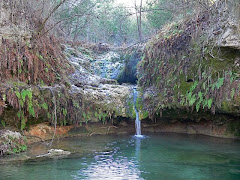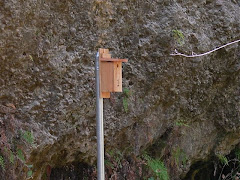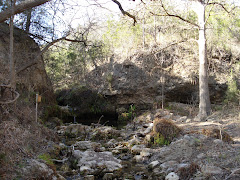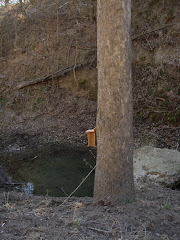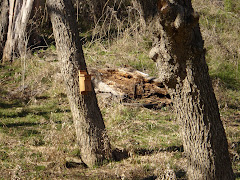 After the fog burned off this morning, and the sun warmed the countryside, I biked Wolf Mountain Trail where one can find scenic glimpses of the surrounding hillsides. All the oak trees still hold their leaves providing brilliant reds among a sea of rich green junipers.
After the fog burned off this morning, and the sun warmed the countryside, I biked Wolf Mountain Trail where one can find scenic glimpses of the surrounding hillsides. All the oak trees still hold their leaves providing brilliant reds among a sea of rich green junipers. My visit to the park this morning began at the bird blind where a Fox Sparrow added highlight to my day. Down at Hackenburg Creek and the Pedernales River I saw a Winter Wren who delighted in the gnarly broken branches hung up in the bald cypress trees along the river's edge. This is the same place I saw this species last winter and spring. A Green Kingfisher flitted back and forth across the water, only a foot above its surface, in search of small fish.
delighted in the gnarly broken branches hung up in the bald cypress trees along the river's edge. This is the same place I saw this species last winter and spring. A Green Kingfisher flitted back and forth across the water, only a foot above its surface, in search of small fish.
 delighted in the gnarly broken branches hung up in the bald cypress trees along the river's edge. This is the same place I saw this species last winter and spring. A Green Kingfisher flitted back and forth across the water, only a foot above its surface, in search of small fish.
delighted in the gnarly broken branches hung up in the bald cypress trees along the river's edge. This is the same place I saw this species last winter and spring. A Green Kingfisher flitted back and forth across the water, only a foot above its surface, in search of small fish. Most of the bald cypress have dropped their needles leaving a brown soft mat along the shoreline. Water levels along the river are probably at winter lows. The water flowed lazily by with groups of cypress needles marking its flow rate.
I stopped at Jones Springs where the silence was perfect for meditation. Western Scrub Jays, and an occasional Black-crested Titmouse broke the silence as they came by to bathe and drink. Temperatures reached the mid 70's but with no noticeable wind it felt like 80 degrees. A perfect Thanksgiving Day to enjoy some physical exercise and the sites and sounds of wildlife in the park.








 This morning I was hoping to see some migrant birds at the bird blind. The only migrant was a juvenile Baltimore Oriole. There has been an albino-crested female Northern Cardinal hanging out at the bird blind since July. Photo to the left.
This morning I was hoping to see some migrant birds at the bird blind. The only migrant was a juvenile Baltimore Oriole. There has been an albino-crested female Northern Cardinal hanging out at the bird blind since July. Photo to the left. 









































